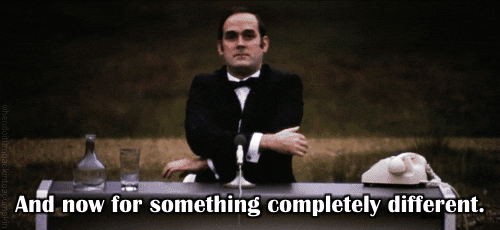Perhaps as is evident from my current fixation on the Enneagram, I’m drawn to personality metrics, and all kinds of explanatory models for why people act so damn different from each other (which is to say, from me) all the time.
One fascinating one is the “moral foundations” quiz (link below), which is based on the work of Jonathan Haidt and his colleagues. Haidt is a psychologist who studies the psychology of morality, and if that seems a little odd to you, then I’d highly recommend his book The Righteous Mind. It is completely fascinating.
When I read it in 2017, it blew my mind–essentially because I had become so unaccustomed to hearing the word “morality” used in a secular context. I think many of us have a strong distaste for that word, preferring a term like “ethics,” which seems a little more civilized and rational, a little less feral, than “morality.” But the book forces you to look right at that word, and to examine what your own morality might be. “Haven’t got one,” I thought, slightly tongue-in-cheek, for the first hundred pages or so. But I was wrong.

Haidt identifies six moral foundations, which he calls “tastebuds.” Each of us cares more or less about each of the six, resulting in our own individual morality which we use constantly, unconsciously, to evaluate the world. Each of the six is a set of concepts, as follows:
- Care/Harm
- Fairness/Cheating
- Loyalty/Betrayal
- Authority/Subversion
- Sanctity/Degradation
- Liberty/Oppression
The degree to which each person feels each of those concepts strongly will determine how they evaluate a situation. For example, most of us can readily understand care vs. harm. Just imagine a situation in which someone or something vulnerable–a child or a puppy–is in need of care, or worse, is being mistreated. The feeling that stirs in you or the action it might drive you to, so the theory goes, shows your care/harm tastebud activating. And if the bare mention of the idea that such a thing could happen got you squirming, congratulations: your care/harm tastebud is alive and well.
But what about the others? The one that fascinates me the most is sanctity vs. degradation, also known as “purity.” The most obvious applications of this tastebud are in sexual morality. But it’s also about food, and personal hygiene. Imagine a clean, cool glass of water. Now imagine someone drops a harmless, sterile cockroach in it. Would you drink it? Your rational mind may accept that the cockroach is sterilized, but your sanctity/degradation tastebud will violently protest if you try to drink it. Even though that may not sound like “morality” at first, consider how religions have almost always set standards for cleanliness of body and of food. We must conclude that food and cleanliness can be deeply moral to humans. If Haidt is right, this tastebud demonstrates the influence of purity on your morality, even at an unconscious level, and even when the tastebud reacts to circumstances that don’t appear to have a moral component at all, like the cockroach.
In the last portion of The Righteous Mind, Haidt goes on to apply his findings about the moral tastebuds to the modern* political climate. He found experimentally that American liberals and American conservatives have recognizable patterns that show up in their tastebuds: liberals tend to weigh care/harm and fairness/cheating very highly, and weigh the rest of the tastebuds less strongly. Conservatives weigh all six somewhat evenly, meaning that their care/harm and fairness/cheating tastebuds come out a little lower than liberals’ did, but the others are higher.
You can easily imagine how that would play out in a political argument: person A might be making excellent points about how Policy X will harm someone, while person B is making excellent points about how Policy X diminishes oppression. They may quickly begin talking directly past each other, unable to hear the value in the other’s point, or see the weaknesses in their own.
(You definitely have something in mind for what policy X is, don’t you? You even know what you think about policy X, and I haven’t said what it is.)
Anyway, if you’re interested, take the test and find out where you come out.
*A note on the “modern” political climate: The Righteous Mind was published in the salad days of 2012, back when politics were all about the Obama era and the Tea Party moment. It feels like so long ago. And even way back in 2017, I thought Haidt’s descriptions of what makes someone “liberal” or “conservative” were pretty outdated. Things have changed, folks.








